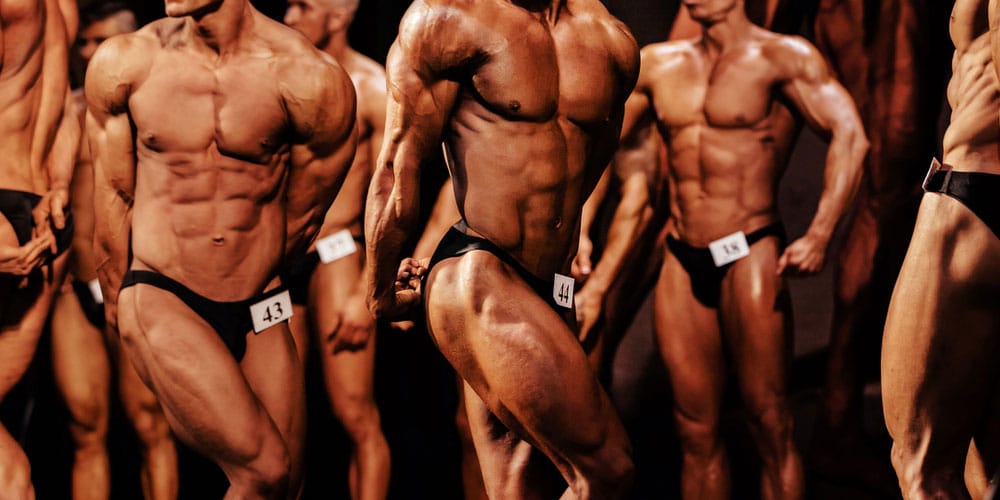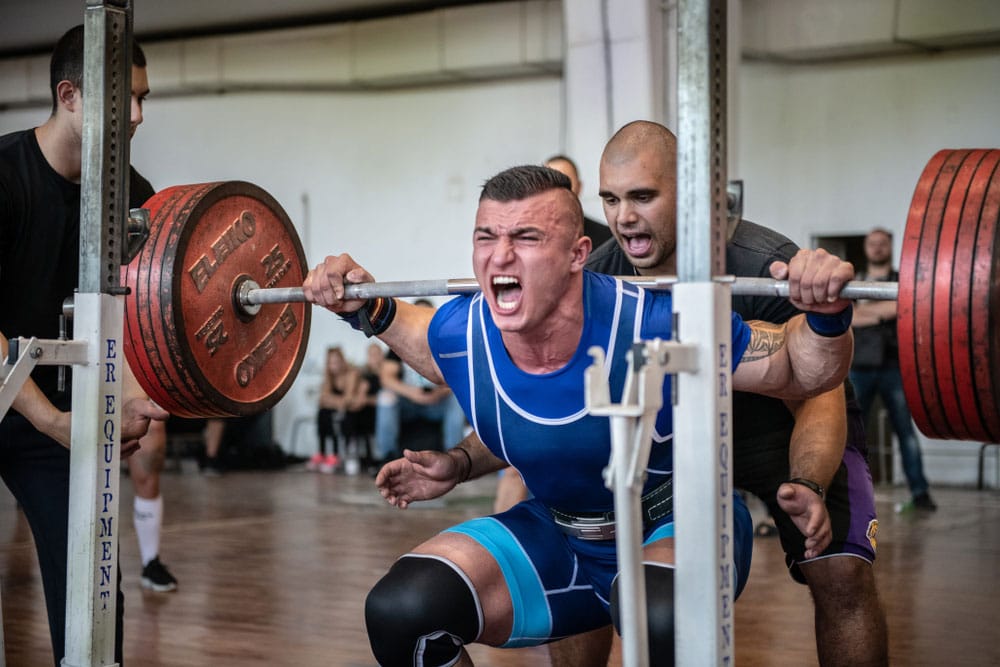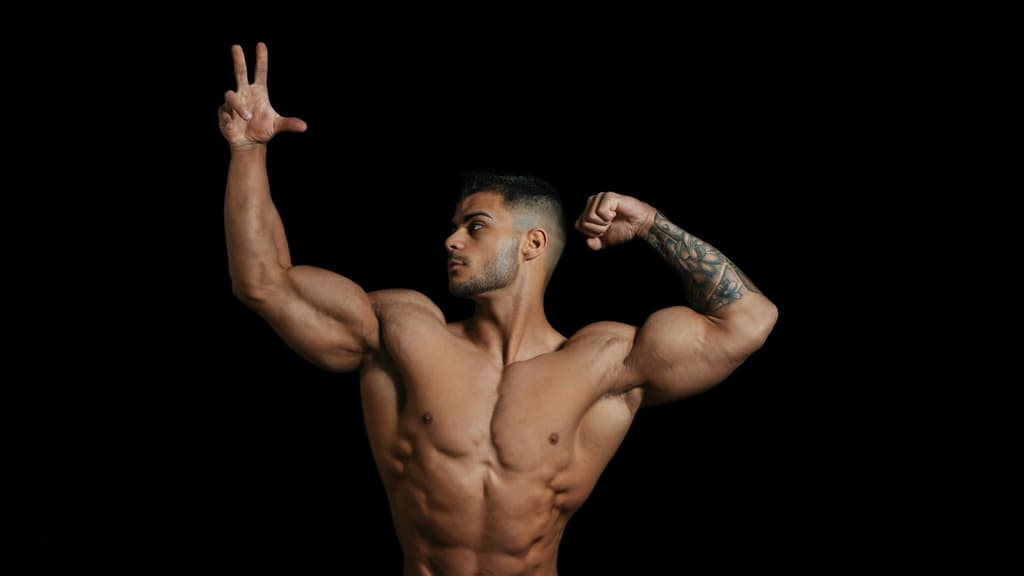Bodybuilder vs. Powerlifter: Differences & Considerations
Learn the differences between bodybuilder vs. powerlilfter physiques. Understand the training techniques behind each sport.
Bodybuilder vs. Powerlifter— Sport Considerations
If you’re someone who’s been in the gym for quite some time and you’ve achieved the baseline goal of “cut fat, add lean bulk,” you’re probably looking at the next natural progression in your fitness journey. Bodybuilder vs. powerlifter training may be right up your alley.
Let’s say you’ve been going to the gym for three years and you’re looking to take things to the next level.
After a certain baseline amount of fitness, competing in a powerlifting or bodybuilding competition can be a great way to increase your confidence and double down on your training to get even fitter.
“Bodybuilder” and “powerlifter” are often thrown around as terms to mean “really, really fit person.”
Which both are! But even in the gym community, many of us don’t have accurate knowledge of the difference between bodybuilder vs. powerlifter and how the two categories of athletes stack up.
Weight training principles

Before we put bodybuilding and powerlifting techniques under the microscope, it’s helpful to understand a few of the key principles behind weight training and how they work.
Hypertrophy
Muscular hypertrophy is the increase in size of the muscles in your body. When you strength train, your muscles will not only get stronger, but they will grow in size over time and with adequate resistance.
Progressive Overload
When you’re working toward building up your strength, you’ll need to ensure that the weights you’ve lifting get progressively heavier as you improve in your training.
This is called progressive overload. The term applies to any increase in the intensity of your workouts. Not only do heavier weights count, but you could consider longer sets and reps, more frequent workouts or shorter breaks between sets forms of progressive overload training too.
What is bodybuilding?

Bodybuilding is the practice of increasing your muscle size and quality by training for hypertrophy (muscle growth).
As a term, it’s often used interchangeably with bodybuilding the sport. Competitive bodybuilding follows the same principles as recreational bodybuilding: you train to make your muscles grow and look as good as possible.
Competitively, though, bodybuilders are judged by a series of criteria after which it’s determined who has the “best body” by these strict guidelines.
You may have heard of the Mr. Olympia. This is the world’s biggest and most famous bodybuilding competition. From Golgen Age competitors like Arnold Schwarzenneger and Frank Zane to recent standouts like Phil Heath and even young guys like Chris Bumstead, the Olympia is one of the most prestigious titles you can take as a bodybuilder.
Pros
Mental toughness: To hit low calorie goals and get shredded, you need to be mentally strong just as much as the physical. High stress is common, especially when you’re weeks out from a competition, but competing successfully can make you much stronger mentally.
Seeing a positive result from competing incentivizes you to push yourself in the gym and continue to compete.
Social connections: In bodybuilding, you’ll likely want to network with people who are just as disciplined as you. Building relationships outside the gym can be tough, but there’s a great bodybuilding community active online, or even at your local gym who understand the difficulties of the sport. This is a good way to meet gym buddies and learn about upcoming competitions while training with people who hold you to high standards.
Cons

Strict diet: This sport requires immense discipline when it comes to what you put in your body. To enter a bodybuilding competition, you need to look shredded. Washboard abs, bicep veins and a lean look are staples of this physique. Basically you need to work out to look like a Greek God.
If you hate counting calories, bad news for you. Bodybuilders, at least competitively need to be ultra strict on what they’re eating. This helps them to avoid extra body fat. In studies on body composition of competitive bodybuilders, some male athletes even measured in at under 5% body fat.
Lack of strength gains: Bodybuilders are by no means weak. But if you train only to look good, you do miss out on some of the chances to get in maximum lifts to make you stronger. Bodybuilders usually follow hypertrophy training— higher reps at medium weight.
Although this will help you look good, it’s not as optimal for building strength.
What is powerlifting?

Powerlifting, on the other hand, is purely a strength sport.
Rooted in the strongman competitions of old, this sport has three key benchmarks: the squat, the deadlift, and the bench press.
In a competition, you get three attempts at each lift. Your best of three is scored and used to rank your skill against those of the others in the competition.
In powerlifting, you’re only judged for what your body can do, not what it looks like.
Although there are certain trends in training or body types that seem to fare better than others in powerlifting events (more on that later), theoretically, anyone who hits the strength requirements can powerlift either recreationally or competitively, regardless of looks.
Pros

More lax diet: Although high-level powerlifting competitors usually have coaches and dietitians who would instruct them on what to eat this is generally less strict than a bodybuilding diet.
The aim for most of these athletes is simply to put on a lot of mass. If you want to powerlift and get big, you’re probably going to have a more fun time bulking than obsessively cutting weight like a bodybuilder might have to. If you’re especially skinny and want to powerlift, you may even be able to try a dirty bulk.
For more information on how to eat for your training program, read:
More strength: Training in a powerlifting style lets you train your maximum lifts more frequently. By attempting the heaviest weights you can lift, you can build serious strength and power.

Cons
Too much body fat: Many powerlifters do put on so much size that they are considered medically overweight or obese.
Although people have varying opinions on the body mass index (everything from “BMI is trash” to still treating this measurement guide as the gospel truth), there seems to be some merit in using it as part of a multifaceted approach to assessing the health of a population.
It can be wildly off-base for many athletes though, including powerlifters. But many powerlifters do store unnecessary body fat.
There’s a misconception that just because someone is “fit” or active like a powerlifter is, the extra fat can’t pose risks to their heart health.
Too much fat— no matter if you’re an athlete or not— comes with dangers. A study of body composition and mortality in the general population found that people with excess fat are at higher risk of cardiovascular disease, respiratory disease, certain cancers and more.
Bodybuilder vs. Powerlifter— Aesthetics
If you train for aesthetics, you’ll want to listen up.
Although people with many different looks can successfully compete in these sports, there are a few staples of what a “typical” bodybuilder vs. powerlifter’s physique looks like.
Bodybuilding as a sport aims to show off the maximum of human potential when it comes to optimizing the look of your muscles and body composition.
In this domain, bodybuilding judges look for things like:
- Definition
- Muscle striation
- Proportions
- Overall muscle mass.
Judges scrutinize every element of a competitor’s appearance from their neck thickness to the V-shape from a man’s shoulders to hit abdominals.
This sport focuses on training for peak aesthetics to show what the body is capable of.
Powerlifting, on the other hand is much more skills focused. Despite this, there are some common physical traits many powerlifters seem to share: these people are BIG.
Powerlifters are known for hulking figures. They tend to have a ton of muscle mass, but a relatively high proportion of body fat too.
The combination of these elements makes them look absolutely massive. This size is usually useful for achieving overall strength.
Remember, unlike bodybuilding, powerlifting is skills-based, not aesthetic. The body types that tend to do well, though, are people with very large frames.
Who is stronger, bodybuilders or powerlifters?
Powerlifters usually have the edge when it comes to pure strength.
Why?
Because that’s what they train for!
Bodybuilding is an aesthetic form of training while powerlifting really focuses on your one-rep maxes for strength. This is the maximum amount of weight you can lift for a single repetition with proper form, indicative of your total strength.
Does that mean bodybuilder aren’t strong?
Absolutely not. It’s highly likely that the people you see at the gym following bodybuilder-style hypertrophy training are incredibl strong too.
If you’re lifting weights consistently, it’s inevitable that you’ll get stronger, even if it’s not your main training goal.
Is it better to train like a bodybuilder or powerlifter?
Whether you adopt bodybuilder vs. powerlifter style training for the majority of your workout time depends entirely on your personal goals.
If you’re purely in the gym for aesthetics, a higher-rep hypertrophy training program that’s more in line with what a bodybuilder might do is your best bet. This is useful if you don’t always want to do the type of max strength training lifts that will leave you tired for days.
If your biggest concern is getting stronger, a program that takes more tips from traditional powerlifting will suit you better.
And remember, it’s okay to combine the two!
If you genuinely enjoy multiple training styles, there’s no reason you can’t powerlift and train like a bodybuilder.
If anything, this mix will give you an even blend of strength and aesthetics which many weightlifters enjoy.
References
Bauer, P., Majisik, A., Mitter, B., Csapo, R., Tschan, H., Hume, P., Martínez-Rodríguez, A., & Makivic, B. (2023). Body Composition of Competitive Bodybuilders: A Systematic Review of Published Data and Recommendations for Future Work. Journal of strength and conditioning research, 37(3), 726–732. https://doi.org/10.1519/JSC.0000000000004155
Ferland, P. M., Pollock, A., Swope, R., Ryan, M., Reeder, M., Heumann, K., & Comtois, A. S. (2020). The Relationship Between Physical Characteristics and Maximal Strength in Men
Practicing the Back Squat, the Bench Press and the Deadlift. International journal of exercise science, 13(4), 281–297.
Ferland, P. M., Charron, J., Brisebois-Boies, M., Miron, F. S., & Comtois, A. S. (2023). Body Composition and Maximal Strength of Powerlifters: A Descriptive Quantitative and Longitudinal Study. International journal of exercise science, 16(4), 828–845.
https://montrealgazette.com/health/why-so-many-think-the-bmi-is-trash
Lee, D. H., & Giovannucci, E. L. (2018). Body composition and mortality in the general population: A review of epidemiologic studies. Experimental biology and medicine (Maywood, N.J.), 243(17-18), 1275–1285. https://doi.org/10.1177/1535370218818161
Plotkin, D., Coleman, M., Van Every, D., Maldonado, J., Oberlin, D., Israetel, M., Feather, J., Alto, A., Vigotsky, A. D., & Schoenfeld, B. J. (2022). Progressive overload without progressing load? The effects of load or repetition progression on muscular adaptations. PeerJ, 10, e14142. https://doi.org/10.7717/peerj.14142
Related articles


Get fit with Flex
Build muscle & lose weight fast for free.
Available on iPhone + Apple Watch





